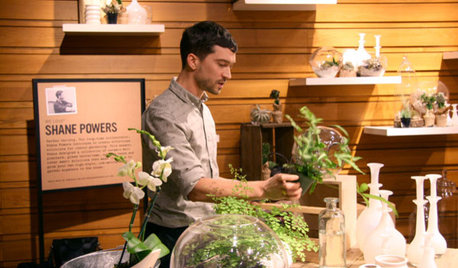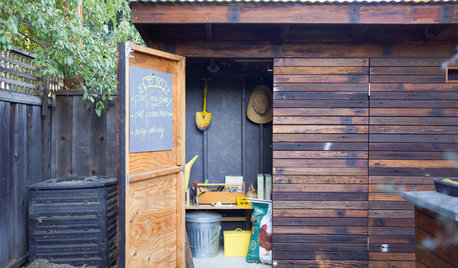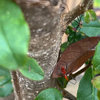One of the best resipe in Organic Gardening
valerie_ru
14 years ago
Related Stories

MOVINGThe All-in-One-Place Guide to Selling Your Home and Moving
Stay organized with this advice on what to do when you change homes
Full Story
URBAN GARDENSOne Fern Day
Think terrariums are tiresome? Unusual containers and unexpected greens yield surprising offshoots
Full Story
FARM YOUR YARDHouzz Call: Show Us Your One-of-a-Kind Chicken Coops
Do you have a fun or stylish backyard shelter for your feathered friends? Post your pictures and stories in the Comments!
Full Story
GARDENING GUIDESOrganic Matters: Thwart Insect Pests With Trap Crops
Add a few sacrificial plants to your garden to lure insects away from the harvest
Full Story
INSPIRING GARDENSFrom Concrete Lot to Gracious Organic Garden in Seattle
Plants, pests and even weeds have a place in this landscape, which offers an edible bounty and a feast for the eyes
Full Story
OUTBUILDINGSGet It Done: Overhaul and Organize Your Garden Shed
Consider these tips for outdoor storage space that’s accessible and attractive
Full Story
TASTEMAKERSAsk an Expert: What Is the One Design Rule You Live By?
Eight home experts share their top design rules
Full Story
PETSWorld of Design: Pampered Pets and Their 10 One-of-a-Kind Homes
Fall in love with these critters and their clever living spaces, from a cat playground in France to a chicken house in the U.S.
Full Story
LIFESimple Pleasures: Dinner for One
Make a solo meal a luxurious experience by savoring the moment along with whatever you cook
Full Story
MOVINGSaying Goodbye to One Home and Hello to Another
Honor your past and embrace your future with these ideas for easing the transition during a move
Full Story



tobydmv
valerie_ruOriginal Author
Related Professionals
Berwyn Landscape Contractors · Cambridge Landscape Contractors · Cicero Landscape Contractors · Cincinnati Landscape Contractors · Hickory Hills Landscape Contractors · Lake Zurich Landscape Contractors · Madera Landscape Contractors · Mendota Heights Landscape Contractors · Oak Harbor Landscape Contractors · Plymouth Landscape Contractors · Rockland Landscape Contractors · Brooklyn Park Decks, Patios & Outdoor Enclosures · Layton Decks, Patios & Outdoor Enclosures · Quincy Decks, Patios & Outdoor Enclosures · West Bloomfield Township Decks, Patios & Outdoor Enclosuresjustaguy2
valerie_ruOriginal Author
tobydmv
valerie_ruOriginal Author
nandina
valerie_ruOriginal Author
pnbrown
valerie_ruOriginal Author
pnbrown
valerie_ruOriginal Author
pnbrown
valerie_ruOriginal Author
pnbrown
valerie_ruOriginal Author
kingkongos
kingkongos
nandina
valerie_ruOriginal Author
briergardener_gw
valerie_ruOriginal Author
nandina
kingkongos
valerie_ruOriginal Author
valerie_ruOriginal Author
kingkongos
valerie_ruOriginal Author
valerie_ruOriginal Author
kept
valerie_ruOriginal Author
champagne
briergardener_gw
valerie_ruOriginal Author
valerie_ruOriginal Author
briergardener_gw
valerie_ruOriginal Author
valerie_ruOriginal Author
nandina
kingkongos
valerie_ruOriginal Author
valerie_ruOriginal Author
briergardener_gw
nandina
valerie_ruOriginal Author
kept
kingkongos
valerie_ruOriginal Author
valerie_ruOriginal Author
briergardener_gw